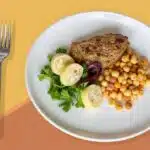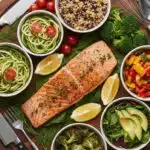I’ll cut to the chase: blaming ultra-processed foods (UPFs) for overeating is a bit like pinning all your relationship problems on your smartphone—it’s an easy target, but it misses so much. A fresh batch of research out of the University of Leeds suggests that what really gets us reaching for another handful of crisps isn’t the fancy industrial processing; it’s our own beliefs about taste, texture, and nutrition.
And honestly, that feels more empowering than doom-scrolling through another Nova classification debate, right?
The Usual Suspect, Reconsidered
Ultra-processed foods have long worn the villain’s cloak. Picture this: additives, salts, sugars, fats—all conspiring to hijack your dopamine circuits. But before you swear off packaged snacks forever, consider this surprising twist: new research published in the Appetite journal found that UPF status explained almost nothing of why we overeat.
Shocking? Sure. But in hindsight, it makes sense. We don’t snack mindlessly because of a technicolor label; we snack because the experience feels irresistible.
A little nuance goes a long way here. It’s tempting to lump every Twinkie and soda under the same evil banner, yet fortified cereals and protein bars get swept in the same dragnet. Feels unfair, doesn’t it? It’s like banning all music because of a few bad karaoke nights.
What the Study Did (and Didn’t Do)
Researchers ran three online surveys with over 3,000 Brits. Participants rated more than 400 unbranded food images—everything from apples and jacket potatoes to noodles and custard creams—on two scales: how much they liked each food, and how likely they were to give in to hedonic eating (that is, eating for pleasure rather than hunger). Then the scientists cross-referenced these scores against nutritional breakdowns, UPF classification, and perceptions like “sweet,” “fatty,” or “high-fiber.”
- Foods people ate frequently? Usually ones they genuinely liked.
- Foods flagged as binge-triggers? Usually ones thought low in satiety, cheap per calorie, or—ironically—less healthy.
But here’s the kicker: beliefs about fat, carbs, and fiber explained far more overeating variance than UPF status ever could.
Nutrition Credentials Over Industrial Labels
I’m a bit of a food nerd, so this part really tickled my brain. According to the study:
- Nutritional traits accounted for 20% of how much people liked a food, and 40–60% of hedonic eating drive.
- Sensory and belief factors—the “sweet,” “fatty,” “highly processed” tags—added another 6–33% in liking and 17–38% in predicted overeating.
- UPF classification? A meager 0–7% uptick in predictive power.
Think about that: a cookie labeled “handmade” but loaded with sugar might dodge your “ultra-processed” radar, yet you’d still devour it if you believed it was buttery and irresistible. Belief trumps label, every time.
When Your Brain Does the Crunching
Let’s not forget the subtle power of expectation. Psychologists call it “sensory-specific satiety”—basically, once your brain decides something is delicious, it craves more of that sensation until it’s truly full or flat-out sick of it. If you think a snack is high-fiber and will fill you up, you might be more conservative with your portions. If it looks like neon-bright chips promising an explosion of crunch, you’ll probably keep munching long after hunger’s waved goodbye.
Honestly, I’ve been there: I’ll start with a sensible bowl of yogurt, rationalizing that I’m making “healthy choices,” and suddenly it’s an Olympic event to control myself. The gap between what I believe and how I behave feels absurd—yet it’s exactly what this study highlights.
Policy Implications and Food Literacy
Now, before regulators rush to redraw the UPF map, pause for a sec.
The American Heart Association has already called for more nuanced frameworks, and these UK findings only double down. Rather than broad “UPF bad” crusades, maybe we should:
- Invest in food literacy campaigns so people grasp satiety, cravings, and balanced nutrition.
- Encourage food makers to craft products that satisfy—think creamy textures and real flavors—without hiding behind diet jargon.
- Push for transparent labeling that highlights fiber content, protein ratios, and authentic ingredients.
Call me idealistic, but teaching people how to feed both their bellies and brains sounds like a far smarter long-term strategy than villainizing an entire food category.
Wrapping Up
I’ll admit, I’ve fallen for the UPF blame game. There were days I’d swear that cutting out granola bars or flavored yogurts would be my golden ticket. But more often than not, it came down to believing “this one is special”—and that belief drove my overeating.
So, if we truly want to curb mindless munching, maybe it’s time I—and you—tune in to our own perceptions and biases, rather than tossing every packaged snack into the same nefarious pot.
What about you? Have you noticed your snacking habits shift when you believe a food is “healthier” or “more filling”?
Drop your stories in the comments below. And hey—don’t forget to follow us on Facebook and Instagram for more unfiltered takes on nutrition, weight loss, and the delightful chaos of real life eating.
Eli Lilly hikes UK prices to cut U.S. costs—smart move or global gamble? Find out.
Sources:
- www.sciencedirect.com/science/article/abs/pii/S0195666325001825
- www.greenqueen.com.hk/ultra-processed-food-upfs-diet-overeating-satiety-nutrition-study/
- www.gu.se/en/research/ultra-processed-food-effects-on-appetite-health-and-dietary-biomarkers
- www.independent.co.uk/life-style/health-and-families/ultra-processed-foods-study-what-upfs-list-b2809519.html

Say Hi to SelfWeightLoss’s Guest Authors! Many talented authors have submitted their article and contributed to get it bigger. Browse through this page. You may find the right author for you. If you think you would like to contribute to the blog, Please visit this page: https://selfweightloss.com/write-for-us and follow its guidance. Thank you!










